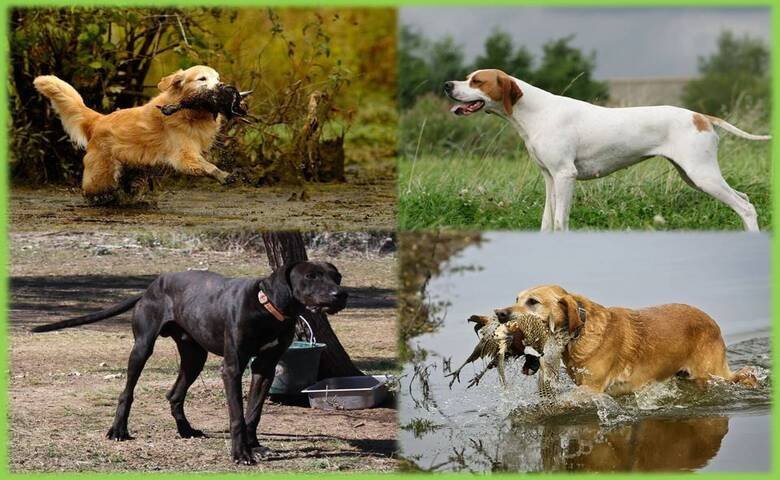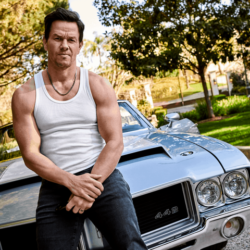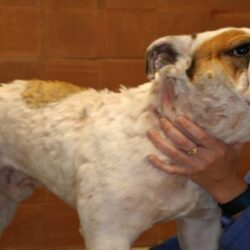It is thought that dogs and people have been hunting together since well before the development of agriculture. Given that hunting was essential to the survival of each species, it seems likely that hunting played a significant role in the evolution of each. You might gain from having a dog at your side if you enjoy hunting. The best hunting dogs for families should have a few key characteristics, including a high prey drive, an openness to training, endurance, and athleticism.
In order to offer you a better understanding of the advantages of each breed, we will only include here the best hunting dogs while covering a wide range of breeds. These best hunting dogs for families are great hunting companions:
Table of Contents
1. Best Pheasant Hunting Dogs: English Springer Spaniel
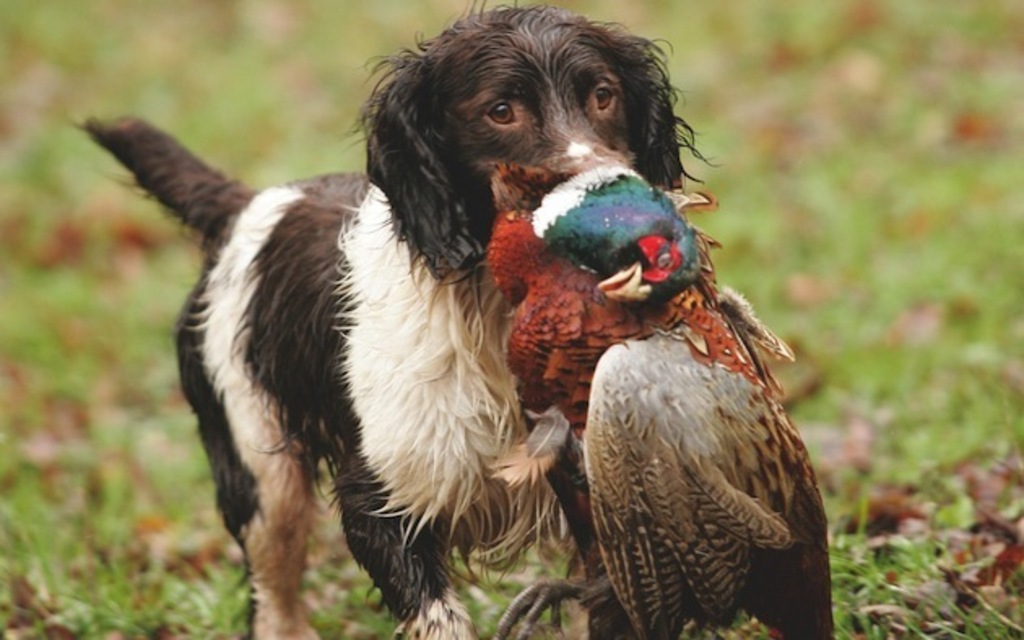
The English springer spaniel is a skilled bird dog who excels in flushing out and pursuing pheasants in particular. The retrieving abilities of this dog are comparable to those of Labrador and golden retrievers. Additionally, due to its slightly smaller size, the English springer spaniel is better suited to hunt in tighter settings. The springer makes a great household dog when not working.
Springers can compete with the best birds of any breed in an upland area. Despite being smaller, its high amount of energy allows them to traverse a lot of ground when hunting. These are devoted dogs who work hard and want to please their owners. They have an excellent noses, an all-around nice demeanor, and a biddable disposition.
Breed Overview:
Height: 19 – 20 inches
Weight: 40 – 53 pounds
Physique: Medium-length, feathered coat, soft expression, drop ears, and good runner.
2. Best Bird Hunting Dog | Best Quail Hunting Dogs: Pointer

For decades, pointers have ruled the top divisions of the field-trial circuit. A bird dog with a strong prey drive and a will to succeed, the pointer. The pointer will aggressively chase prey like quail and pheasants. Additionally, the breed is suitable for hunting in hotter climes due to its moderate heat tolerance.
The toughest terrain won’t deter pointers from searching for a covey of quails because of their intense prey drive. In addition to providing enough dogs for any hunt, especially the quail hunt, their thin coat helps them stay cool in the heat. You can even find pointers, which are often high-energy dogs that even make good family dogs if you want to go woodcock or grouse hunting. A pointer is a dependable, affectionate companion whether hunting or relaxing on the couch.
Breed Overview:
Height: 17 – 21 inches
Weight: 45 – 75 pounds
Physique: Short, dense coat; lean, muscular build; stands upright to point to a target with its long tail extended and wide snout spread.
3. Best Hunting Dogs for Ducks: Labrador Retriever
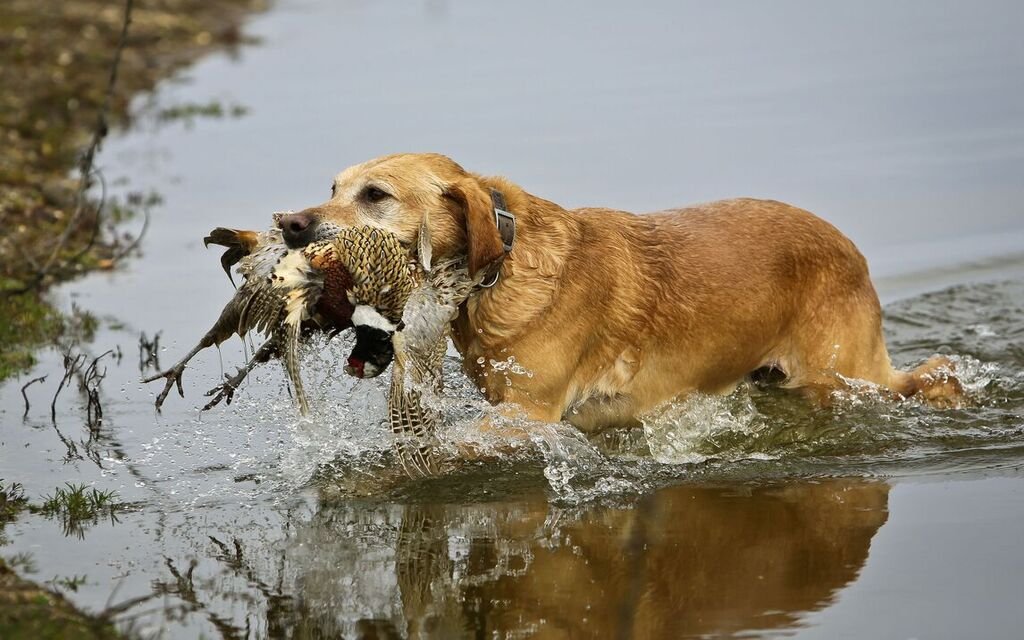
One of the most well-known gun dogs is the Labrador retriever. This cheerful, active, and devoted dog breed can survive cold weather and swim in chilly water with ease. For duck hunting, Labradors are frequently regarded as the best. Due to their friendliness and want to please, Labs make wonderful companions and family dogs when they aren’t out hunting.
Compared to other breeds, Labradors mature more quickly, enabling them to pick up on training at a younger age and handle the learning curve of understanding whistle and hand signals from a distance while executing blind retrieves, as well as the challenging ideas involved in the field competitions.
Breed Overview:
Height: 21 – 24 inches
Weight: 55 – 80 pounds
Physique: large cranium and muscular jaw, silky, water-resistant coat, otter-like tail, strong jaw, and friendly eyes. strong, athletic body.
4. Squirrel Hunting Dogs: Mountain Cur
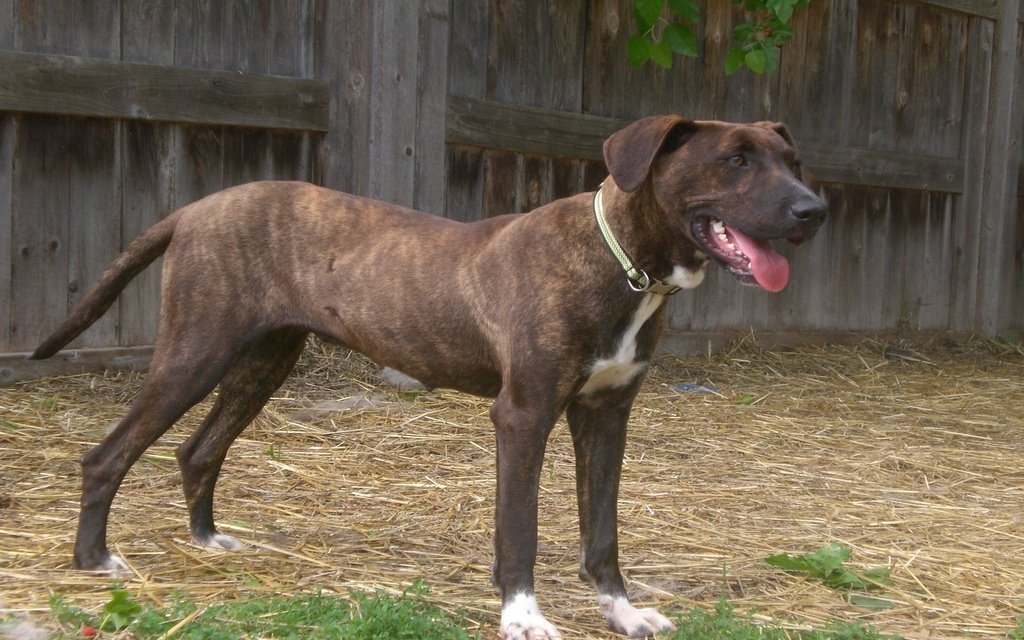
Nearly all dogs enjoy chasing squirrels, but curs and feists were specifically bred to do it, and they do it with gusto. The mountain cur pursues raccoons and squirrels. Families utilized them as all-purpose dogs for both hunting and security. They are a part of a long history of hunting. By them you can go squirrel hunting. Since 1998, they have been a recognized breed by the UKC.
The NKC Squirrel Hunts are dominated by mountain curs. Dogs of the Cur or Feist breed that are registered with the NKC (National Kennel Club) are allowed to go hunting. To participate in the hunt, a dog that is not NKC registered must be registered on the day of the hunt.
5. Rat Killing Dogs | Rat Terriers Killing Rats
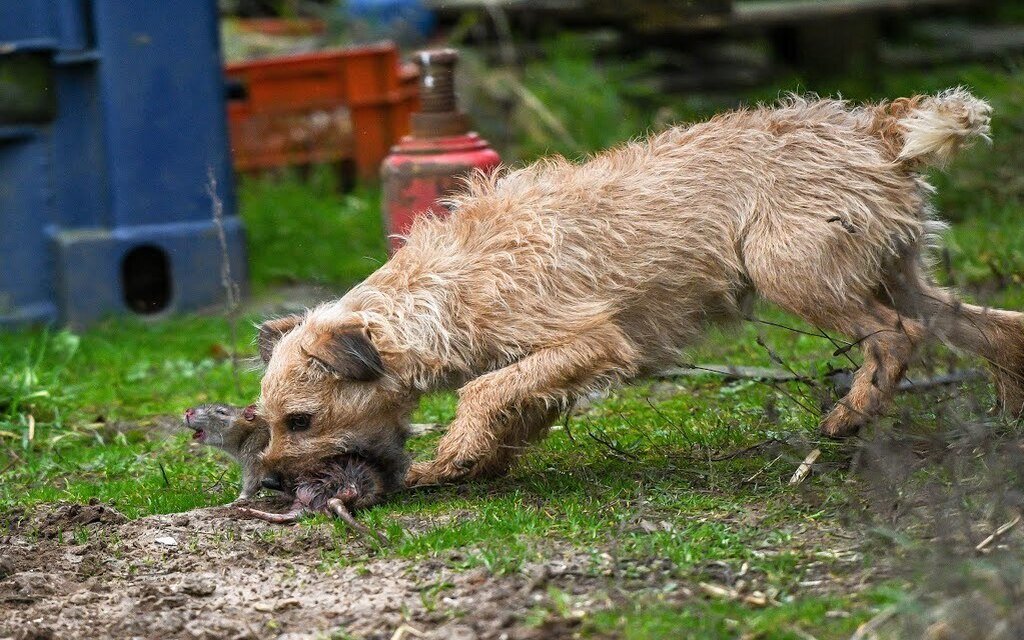
An American dog breed with a history as a farm dog and hunting partner is the rat terrier. They are closely related to the diminutive hunting dogs known as feists. In the 1920s and 1930s, they were widespread on family farms; nevertheless, today the United and American Kennel Clubs classify them as a rare breed. These are smart, energetic breeds that can be maintained as family pets or for pest control.
Breed Overview:
Height: 10 – 18 inches
Weight: 10 – 25 pounds
Physique: solitary, flawless coat, Black, tan, chocolate, grey Isabella (pearl), blue, lemon, and apricot are some of the colors. may have at least one white hue and be tri- or bi-colored.
6. Shed Hunting Dogs | Best Bird Hunting Dog: Golden Retriever

Golden retrievers are also good gun dogs, just like Labradors. They work well for pursuing small games like birds. They are devoted, eager, and easily trained. They are renowned for getting along nicely with kids and are ideal family companions.
Breed Overview:
Height: 21 – 24 inches
Weight: 55 – 75 pounds
Physique: large head, shiny gold coat, pleasant and perceptive eyes, small ears, strong, muscular physique.
7. Rabbit Hunting Dogs: Beagle

The beagle is a scent hound with a powerful voice and an exceptional nose. This breed was developed particularly for rabbit hunting. Additionally, beagles are often fine with children and make wonderful companions for many types of households. They have a reputation for being extremely devoted and eager to please.
They make the ideal dogs for circling bunnies to allow hunters a chance to shoot them. Beagles are the best choice for hunting rabbits because of their exceptional scenting abilities, speed, and agility, and because of their propensity to bark, you’ll never lose sight of where they are.
Breed Overview:
Height: 13 – 15 inches
Weight: 20 – 25 pounds
Physique: Long, floppy ears, a muscular frame, a domed cranium, a squarish nose, and a perky, long tail carried upward
8. Turkey Hunting Dogs: Appalachian Turkey Dogs
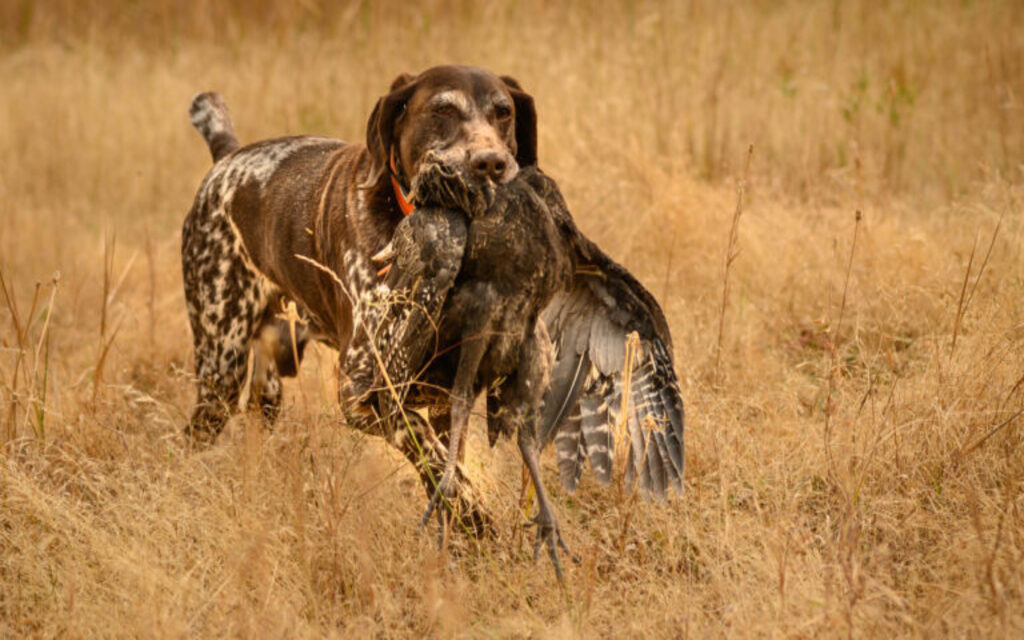
An autumn turkey dog needs to be a strong runner who can locate groups of birds using its vision or ground and air scents. When they succeed, they bust the flock into singles by giving pursuit while barking like a hound, scattering the birds in all directions. The dog then goes back to the hunter and cuddles up to wait. It’s difficult to argue against the logic and breeding of Appalachian turkey dogs, despite the fact these are a favorite choice for turkey hunting.
9. Deer Hunting Dogs: American Foxhound

A rangy, vivacious dog with plenty of stamina, a good nose, and a desire to proclaim his joy of the hunt for all to hear are necessary for running deer successfully. That is the essence of the American foxhound. To catch a deer or a fox, for that matter, they will go to any lengths.
The foxhound is one of the few dogs with such a lengthy American history. The American foxhound is a scent hound full of determination. This running hound thrives on the chase. Bred from English foxhounds, the breed was first used mainly to hunt foxes. In time, the breed also was involved in deer hunting. Foxhounds make loving and loyal companions.
Breed Overview:
Height: 21 – 28 inches
Weight: 60 – 70 pounds
Physique: Long, curled tail, huge head, droopy ears, long, slim legs
10. Bear Hunting with Hounds | Bear Hunting Dogs: Plott Hound

You need a dog that can discover the old scent and follow it when chasing black bears in their natural habitat. The dog should also be intelligent, hardy, and gritty. The Plott Hound is the ideal dog for that because of its muscular build, athleticism, and tenacity.
Plotts are able to locate and follow ancient scents through densely forested hills and dales that black bears call home. Plotts has been acknowledged by the United Kennel Club since 1946, but the American Kennel Club finally acknowledged him in 2006.
11. Sea Duck Hunting Dogs: Chesapeake Bay Retriever

An athletic and determined gun dog, the Chesapeake Bay retriever. This breed is usually highly dedicated to its owner and intelligent. The dog’s oily coat offers it a built-in resistance to the water, making it suitable for cold water. This breed, however, is not necessarily everyone’s best friend, unlike the Lab. A Chessie can be apprehensive of strangers but is fiercely devoted to their family.
When market hunting was still practiced, Chessies were used to transport the masses of ducks that punt gun-wielding hunters had shot. After that, they were assigned with guarding the boat, equipment, and weaponry at the docks. They enjoy swimming and frequently dive headfirst into chilly water to make retrieves. They are psychologically ideal for the demanding work of sea-duck hunting because of their determined nature.
Breed Overview:
Height: 21 – 26 inches
Weight: 55 – 80 pounds
Physique: wavy, greasy coat, muscular build, typically dark or tan
12. Mountain Lion Hunting Dogs: Bluetick Coonhound
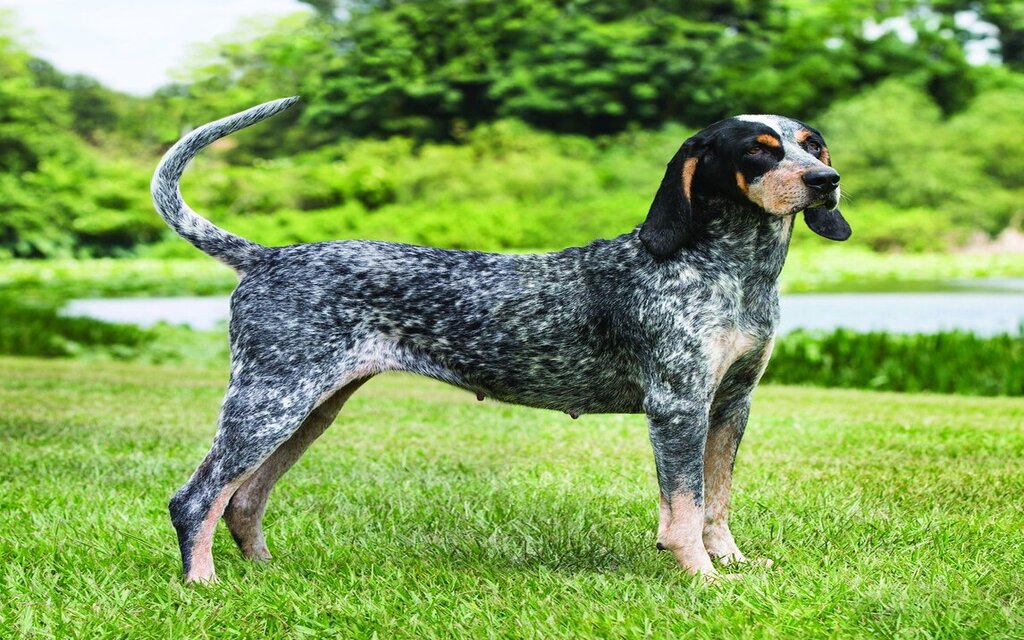
Mountain lions, who are arguably the most secretive mammal in North America, can live almost anywhere there are enough deer to feed them. They prowl almost imperceptibly close to dwellings, and towns, and in close proximity to campers, hikers, bikers, and hunters. A hound with a keen nose and endurance is required to track this large cat. The hound must have the fortitude to confront a formidable foe that can easily kill him when cornered.
A scent hound that can pursue and tree just about any critter it finds is the bluetick coonhound. Even mountain lions and cougars have been observed to be chased by this breed. These are energetic canines with keen senses of smell. While not typically suited for apartment living, the bluetick is a great pet for families with lots of children who are very active.
Breed Overview:
Height: 21 – 27 inches
Weight: 45 – 80 pounds
Physique: Dark blue, short, sleek, and lustrous coat with heavy body mottling, black patches on the back, ears, and sides, and maybe tan markings.
13. Grouse Hunting Dogs: English Setters

The gun dog breed recognized for its pointing, sprinting, and hunting abilities are the English setter. These dogs are outstanding bird hunters since they can be taught to retrieve as well. Conforming and field are the two separate lineages of English setters. The only option for hunters is the smaller, lighter-feathered field line. However, the field setter can also become a great friend.
An English setter is the most regal-looking dog there is, and the fully feathered dog on point in the grouse woods is the most iconic image. The first necessity for good grouse dogs is a nose keen enough to sniff the spooky birds without bumping them. Setters tend to work closer than English pointers, so they will stay in sight while holding a point, allowing the hunter to move into position and get ready to shoot.
Breed Overview:
Height: 25 – 27 inches
Weight: 65 – 80 pounds
Physique: Large head, flat, silky, and slightly wavy medium-length hair, feathering on the ears, tail, legs, and underside, lengthy tail, narrow neck, and long ears
14. Hog Hunting Dogs: Dogo Argentino
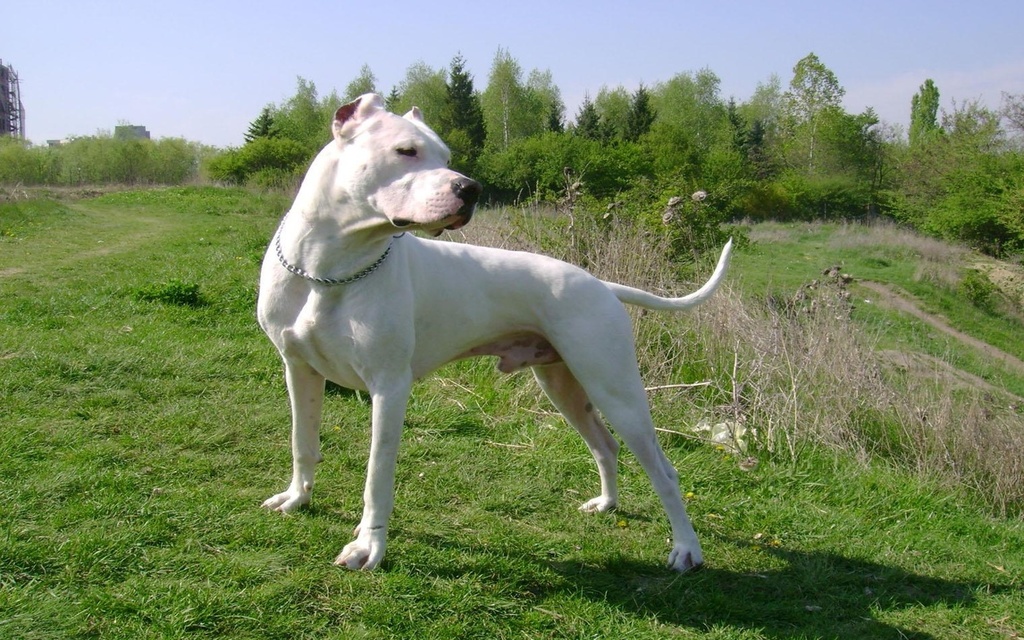
Every method of hunting the cunning and fertile beast has been embraced by recreational hunters as feral pigs are ravaging the nation like the plague and causing up to $1 billion in crop damage annually. Man’s best friend has thus become a crucial component of the hunting equation.
Although pit bulls are frequently used as catch dogs, the Dogo Argentino is superior. Dogos, which are bigger, stronger, and more athletic than pit bulls, were created expressly for big-game hunting. These are South American breeds that were developed for puma and wild hog hunting. They were brought to the United States in the 1970s and are particularly well adapted to the hot climates and rough terrain of Texas, Georgia, and California, where hogs thrive. They have a lean white coat, well-muscled bodies, and the strength to contend with a stubborn boar.
Best Way to Train a Hunting Dog
It is not necessary to pick a specific puppy while selecting the best hunting dog. The true choice is made while choosing the child’s parents. By concentrating on the sex and color you desire, you might make the actual puppy-picking process more straightforward. Then simply reach inside and take a puppy. They all share a similar genetic makeup, and between 6 and 8 weeks old, they start to show signs of their personalities and behaviors.
It takes a lot of training to turn a puppy into a hunting dog, including accustoming them to the sound of the gun, teaching them to wait and retrieve, honing their sense of smell for the game, and more. While experienced hunters may train their dogs independently, many individuals choose to use specialist facilities to prepare puppies for service as hunting dogs.
A dog must have the desire to hunt in order to do so successfully and cope with the demands of training. That character trait and desire are ingrained in its DNA. The best hunting dogs are bred on the field. Look for parents who participate in hunt tests or field trials or who go hunting frequently. Dogs from conformation lines should be avoided. Some show lines may be able to perform in the field, but the majority of them simply fall short. Chesapeake Bay Retrievers would likely be the only exemption to that restriction if they also participate in hunting or field labor.
Frequently Asked Questions
1. Which hunting dog is the most dependable?
Chesapeake Bay retrievers are no exception to the rule that retrievers are frequently among the more devoted canines. These dogs will feel very close to you and make excellent outdoor companions if you go hunting with them or engage in a similar sport to strengthen your relationship. They enjoy being in the water, as befits their name.
2. What dog is best for locating injured deer?
Breeds including the German wire-haired Dachshund, Cur, Slovensky Kopov, Bloodhound, Lacie, and Labrador Retriever are bred to exhibit these characteristics. These dogs can be trained to become outstanding blood-tracking deerhounds.
3. How are coyotes prevented from farms?
The best fences to keep coyotes out are made of wire mesh and should be at least five feet high. You can also add a coyote roller to the top of the fence to prevent them from being able to leap over it.
4. Which canine pursues bears?
A canine breed from Finland is called the Karelian Bear Dog. It is widely regarded as a national treasure in its native country. Karelian Bear Dogs will pursue a wide range of prey. due to its fearlessness and quick reflexes, it is a very popular choice for hunting big game like brown bears, moose, and wild boar.
5. Why are the ears of hunting dogs floppy?
Many hunting breeds have long ears that aid in picking up odors from the path and sweeping them in the direction of the dog’s nose, improving the dog’s ability to track the scent of the wild animals.
6. What do hunting dogs eat?
A diet strong in fat, protein, and carbohydrates is necessary for hunting dogs. This will fuel them with the energy they need to function on lengthy travels while keeping them active and aware.
7. Which canine breed pursues deer?
The Deerhound, one of the tallest canine breeds, was developed to pursue the enormous wild red deer.
8. Which dogs are used by fox hunters?
A pack of scent hounds, most of which are specially bred foxhounds, is typically used for fox hunting. The American Foxhound and the English Foxhound are the two primary foxhound breeds. Based on the fox’s scent, these canines have been trained to pursue it.
9. Which dog has the most powerful bite?
Large and powerful, the Kangal normally weighs between 100 and 130 pounds. They have been taught to protect flocks of sheep and other animals from powerful predators like wolves, jackals, and bears. The Kangal has a powerful bite with a 743 PSI bite force. Of all dog breeds, it has the strongest bite.
10. What breed of hunting dog is the fastest?
Greyhounds, which were developed as hunting dogs, are often regarded as the quickest dog breed. They have been employed in dog racing for many years. Given their enormous level of energy, it is not surprising that their legs are capable of carrying them at a speed of up to 45 mph.
11. Can a hunting dog be a suitable indoor pet?
Due to their propensity for intelligence, sociability, and loyalty, traditional hunting breeds can also make wonderful family pets. But make sure these dogs get enough of exercise and training to perform their tasks well.
Also Read: Best Dog Breeds for Farms
Image credit: Yandex.com

